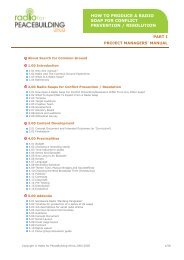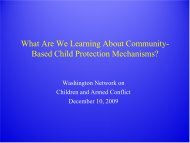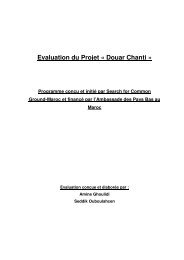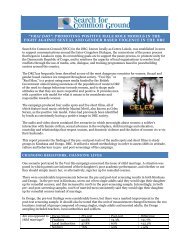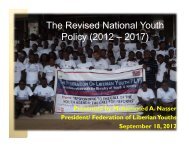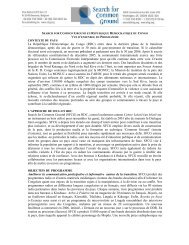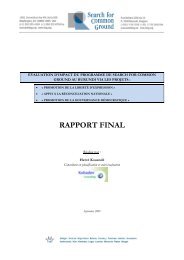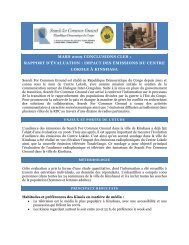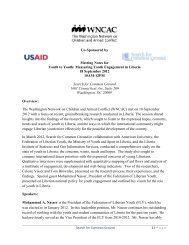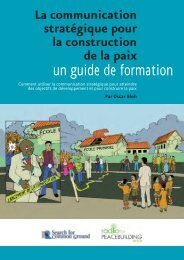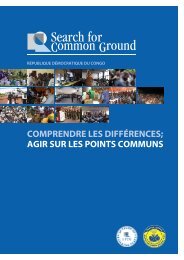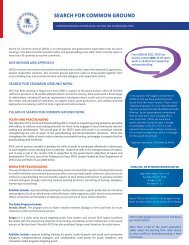The Common Ground Network for Life and Choice Manual
The Common Ground Network for Life and Choice Manual
The Common Ground Network for Life and Choice Manual
You also want an ePaper? Increase the reach of your titles
YUMPU automatically turns print PDFs into web optimized ePapers that Google loves.
good predictors of the interests of the larger world from which we were recruiting participants.<br />
Having an already existing group with this diversity was a major advantage, but had there not<br />
been such a group, it would have been necessary to create one.<br />
Defining Goals.<br />
After brainstorming <strong>and</strong> discussion, we found we had multiple goals:<br />
• Imparting skills <strong>and</strong> tools <strong>for</strong> dialogue, organizing <strong>and</strong> collaborative action;<br />
• Providing opportunities <strong>for</strong> structured pro-life/pro-choice dialogue;<br />
• Surfacing <strong>and</strong> addressing topics of mutual concern <strong>and</strong> interest;<br />
• Promoting networking <strong>and</strong> cross-fertilization;<br />
• Providing inspiration <strong>and</strong> mutual support;<br />
• Drawing out ideas <strong>for</strong> the direction of common ground.<br />
<strong>The</strong> statement of goals directed the planning of specific sessions <strong>and</strong> plenaries <strong>and</strong> other aspects<br />
of the conference.<br />
Choosing a site.<br />
We set out to connect with academic institutions that would be invested enough in our<br />
goals to provide in-kind support <strong>and</strong> assistance. We believed that their involvement would lend<br />
credibility to the conference, especially <strong>for</strong> potential funders. For each conference, we were<br />
successful in making arrangements with a major university that had the needed physical<br />
facilities <strong>and</strong> publishing/publicity capabilities. Our second conference was co-sponsored by<br />
Syracuse University's Program <strong>for</strong> the Analysis <strong>and</strong> Resolution of Conflicts (PARC), a highly<br />
regarded academic conflict resolution program. PARC'S involvement gave us access to a pool<br />
of volunteer facilitators <strong>and</strong> to several faculty members who participated <strong>and</strong> presented at the<br />
conference. In return, we held a faculty seminar <strong>and</strong> workshop <strong>for</strong> graduate students during the<br />
academic year.<br />
H<strong>and</strong>ling Costs.<br />
Foundation support was obtained to finance conference planning <strong>and</strong> to partially<br />
subsidize conference attendance. We realized that the majority of conference participants



